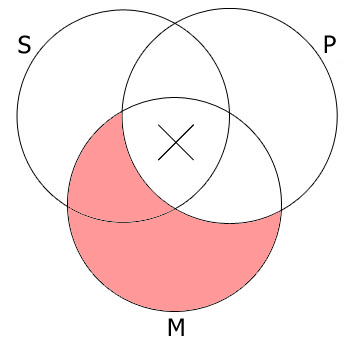I've read some pretty silly articles from Slate before but this one still has me shaking my head in disbelief. A couple months ago the rag published an article by Christin Scarlet Milloy titled
Don't Let the Doctor Do This to Your Newborn.
The article begins with a fictitious scenario in which a mother is lying in bed holding her baby, recovering from labor. The doctor comes in to perform some mysterious but standard "treatment." The mother asks what the treatment is and if it's necessary. The doctor replies vaguely that it will help the child to be recognized and get along with the other children who've received the same treatment but warns that for 1 or 2 percent, there are terrible negative side effects which include depression, social ostracism, difficulty finding or keeping a job and suicide.
You might be thinking to yourself, how horrible. Thank goodness parents of newborns don't actually have to face such a scary situation. But according to Milloy, the imaginary treatment described above is real. "Obstetricians, doctors, and midwives commit this procedure on infants every single day, in every single country. In reality, this treatment is performed almost universally without even asking for the parents' consent, making this practice all the more insidious. It's called
infant gender assignment: When the doctor holds your child up to the harsh light of the delivery room, looks between its legs, and declares his opinion: It's a boy or a girl, based on nothing more than a cursory assessment of your offspring's genitals."
Milloy continues the crazy narrative with explanations on how, beginning with the doctors gender assignment of your baby, the child's life is "instantly and brutally reduced from such infinite potentials down to one concrete set of expectations and stereotypes, and any behavioral deviation from that will be severely punished—both intentionally through bigotry, and unintentionally through ignorance. That doctor (and the power structure behind him) plays a pivotal role in imposing those limits on helpless infants, without their consent, and without your informed consent as a parent. This issue deserves serious consideration by every parent, because no matter what gender identity your child ultimately adopts, infant gender assignment has effects that will last through their whole life."
And just to drive home the point that Milloy is actually criticizing the doctors declaration of a baby's sex and isn't just using the gender assignment thing as some sort of metaphorical critique, I present this quote. "Infant gender assignment is a wilful decision, and as a maturing society we need to judge whether it might be a wrong action. Why must we force this on kids at birth? What is achieved, besides reinforcing tradition? What could be the harm in letting a child wait to declare for themself who they are, once they're old enough (which is generally believed to happen around age 2 or 3)? Clearly, most children will still turn out like we'd expect, but it's unlikely the extra freedom would harm them. On the other hand, we do know the massive harm caused to some children by the removal of that freedom...Think carefully. Infant gender assignment might just be
Russian roulette with your baby's life."
If this article was written anywhere else, I probably would of had to do some research to verify that it wasn't satire. But this isn't satire and as easy as it would be to simply say "this is bat shit crazy" and move on, I feel it deserves some sort of reasoned response.
First, instead of clearly writing what she is arguing for, Milloy instead chooses to heavily saturate the article with rhetorical ploys meant to emotionally persuade the reader. Some of the examples I've already quoted above include calling the doctor's declaration of sex an "insidious" act and comparing it to playing "Russian roulette with your baby's life". Yea, that's right. Milloy seems to believe that a doctor stating "it's a boy" or "it's a girl" is analogically comparable to putting a bullet into a revolver, spinning the cylinder, putting it to the child's head and pulling the trigger.
Milloy uses a similar maneuver at the beginning of the article with his carefully constructed story. She presents a mother facing a somewhat authoritarian doctor ominously wanting to perform a treatment on the new born which may result in long-term negative side effects. It is then revealed to the reader that the hypothetical treatment is actually real and occurs ever day in the form of infant gender assignment. The problem with this, of course, is that a doctor stating the sex of a child is not a treatment. It is, well, just a statement of what is observed. The word treatment implies the use of medical intervention against some sort of illness or injury. That term obviously doesn't apply here.
This leads me to my next point. When a doctor states the babies sex, he or she is simply stating the child's biological gender. It's hilarious how Milloy describes this as an insidious treatment performed without parental consent based on nothing more than a doctors opinion. I'm guessing that for all of human history, whenever a child was born, one of the first things the doctor, midwife or parents have done is to look between the child's legs to see if it was a boy or a girl. But according to Milloy, this very act is to "instantly and brutally" reduce a child "from such infinite potentials down to one concrete set of expectations and stereotypes, and any behavioral deviation from that will be severely punished."
Generally speaking, looking at a child's genitalia is a good way to determine biological sex. It should be noted though that there are exceptions to this rule.
Intersex is the term typically used to describe individuals with a congenital anomaly of the reproductive and sexual system. It seems there are some disagreements as to what should be included in the term intersex and there hasn't been a lot of work done to collect statistical information. According to a 2000 study by Anne Fausto-Sterling, up to 1.7% of babies are born intersex. This statistic includes a wide range of major and minor disorders, some of which are apparent at birth (ambiguous external genitalia) and some which are not (external organs appear male or female but there are internal or chromosomal differences). A second often used statistic is that approximately 1 in 2000 babies are born with ambiguous external genitalia. I found this stat used in a lot of different places but could only find
one article which cited it to a 1998 paper by Kenneth Kipnis and Milton Diamond called Pediatric Ethics and Surgical Assignment of Sex. Anyway, taking these two statistics together it seems we can conclude that just over 1% of babies born may have some sort of major or minor intersex condition which would not be obvious at birth.
So after eliminating the rhetorical ploys, what are we left with? It is still not entirely clear what Milloy's argument is. It seems as if she is saying something like:
Transgender and intersexed individuals experience higher rates of psychological distress and suicide. These problems are caused (or mostly caused) by being assigned the wrong gender at birth by a doctor. Therefore doctors shouldn't be allowed to declare the sex of a baby.
Again, there's a great deal of vagueness in Milloy's article which makes it difficult to restate her argument with complete confidence. This is apparent if you read through the comment section of the article where typically the few people that tried to defend her believed she was talking about infant gender re-assignment (when a baby is born with ambiguous genitalia and a doctor performs surgery on the child to make them look more like their assigned gender).
Anyway, the first premise, that transgenders and intersexed individuals experience higher rates of psychological distress and suicide, can be verified as true through available statistical information.
The second premise, that these problems are caused (mostly caused) by being assigned the wrong gender at birth, is where things go terribly wrong. I think it's more than a little naive to believe that the distress experienced by transgender people would all but go away if a transgendered child was given the ability to declare their own sex at a young age.
To demonstrate, lets do a little thought experiment. Imagine Milloy's world comes to pass and doctors cannot "assign" a child's sex at birth. A child is born, the sex has not been declared by the doctor and the parents even raise it completely gender neutral. At the age of three, the child, who is biologically a boy, declares that it believes it is a girl and the parents then allow her to wear dresses, play with dolls and do whatever other things little girls like to do. Now according to Milloy, the child has been spared the trauma of being assigned the wrong gender and therefore shouldn't experience the sort of psychological distress transgenders often do. Of course, this completely overlooks the elephant in the room. Namely that the child is still transgendered; identifying as a girl but having the biology of a boy. As such, she will still face prejudice from society at large and still have to deal with the confusion of having the body of a boy yet identifying as a girl. As such, I think it would be a safe assumption to believe that as a group transgenders would still have exceptionally high rates of psychological issues.
Though it's not addressed in the article, I think it can be assumed that Milloy is wanting more than just the banning of doctors declaring the babies sex. That alone would really change nothing. It seems that what Milloy really wants is for parents to also have to raise the child in a gender neutral way until the baby can decide for its self.
So how is all this to be carried out? Would there be laws making it illegal for doctors to declare the sex of the child? What would they put down for medical records? Would there be laws which forced parents to raise their child in a gender neutral way? If so, how would this be enforced?
Most importantly, how would raising children in a completely gender neutral environment effect those that do not have intersex issues? The truth is, we really don't know. While some so called experts say that it would allow a child to develop free of limiting gender norms, others believe that it can only cause confusion at a point in life when clarity is needed.
In the end I think it's plain to see that this is at best an ill-conceived idea on Milloy's part. But it does raise the interesting question of how we've gotten to the point that it could be taken seriously enough to be published in a major online news magazine.
Slate: Don’t Let the Doctor Do This to Your Newborn
















































